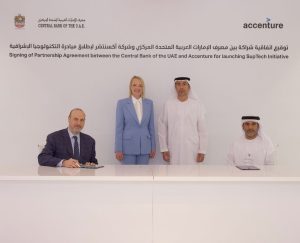
Nine out of ten executives describe their deals as successful while cross-border deals approach post-crisis highs driven by five strategic factors.
In 2014, the number of cross-border M&A transactions globally is on the rise, close to its post-crisis high. Powerful macroeconomic and political forces continue to provide impetus to globalization, and companies around the world are driven by their strategies to move into newmarkets and jurisdictions.
Working with FT Remark,Baker & McKenziehas surveyed 350 executives who have recently undertaken cross-border deals and identified five significant motivating factors for M&A, the challenges each generates, and, crucially, how to overcome them.
Will Seivewright, Partner at Baker & McKenzie Habib Al Mulla in the UAE, said:
“This report provides great insight into the deal trends we are seeing, and highlights the strength of the firm’s global M&A platform, which combined with true local expertise is one of the key determinants cited in the report as leading to a successful transaction. With almost 90% of respondents describing their recent deals as successful, and nearly a half of respondents in the Middle East planning further transactions in the next two years with a further upturn in cross-border deals in the first quarter of 2014, it appears that the M&A market is continuing to move in the right direction.”
This report examines cross-border M&A according to the principal strategic motivations behind each acquisition and highlights the challenges and solutions we regularly face as the law firm clients turn to more than any other for cross-border deals.
The survey shows Middle Eastern businesses are among those most likely to be contemplating cross-border M&A transactions as they seek to establish a global presence. Approximately half of the acquisitions originating from this region will target companies within the Middle East, while the remaining part will target businesses in Asia, Europe, and Africa.
The Five Strategic Motivations
1. Building scale through the acquisition of customers or distribution networks. This raises particular issues around the credibility of revenuestreams, antitrust and competition and the complex process of retainingcustomers post acquisition.
2. Acquiring intellectual property. Such deals can frequently raise challenges related to ownership, data and brand protection and the need to rationalize and consolidate structures and asset ownership in the post-merger phase.
3. Adding skills and capabilities through the acquisition of human capital. This often requires careful planning to address complex cultural and political considerations as well as the development of policies and incentive programs to retain staff.
4. Gaining access to natural resources. Almost invariably such transactions raise questions of politics, regulation/controls and social and environmental impact.
5. Building a company’s strength through the purchase of industrial assets. This is often associated with complex tax, human resources andcompliance issues.
Key Findings
- Cross-border M&A is increasing. During the first quarter of 2014, $263.1bn worth of cross-border deals took place, close to a post-crisis high.
- 86% of respondents deem their last cross-border deal to be successful.
- 34% say they plan to undertake another cross-border deal in the next two years.
- Access to customers (34%) is the most important motivation for the cross-border deals conducted by respondents in our survey.
- This is followed by access to intellectual property (25%), access to industrial assets (21%), access to natural resources (12%) and access to human capital (8%).
- The desire to access intellectual property is the prime motivation for companies making acquisitions in Japan, North America and Europe.
- Human capital is very often the second-most important consideration for companies undertaking cross-border deals.
- The desire to acquire industrial assets is a prominent motivation for cross-border deals in all markets, with the exception of Africa.
Notes for Editors
This report is based on research and data from FT Remark and Mergermarket,leaders in M&A market research, combined with the experience of Baker &McKenzie, which advises on more cross-border M&A transactions than anyother law firm. The report contains a foundation of data and analysis and amix of quotes and case studies based upon the experience of cross-borderacquisitions from the companies involved. Baker & McKenzie partners fromour offices around the world contribute practical advice on identifying andaddressing the challenges of executing cross-border transactions.Baker & McKenzie is recognized globally as the number one firm for cross border M&A by deal volume completed in 2013 (Source: Thomson Reuters 2014).
About Baker & McKenzie
Founded in 1949, Baker & McKenzie advises many of the world’s most dynamic and successful business organizations through more than 4,100 locally qualified lawyers and 6,000 professional staff in 75 offices in 47 countries. The Firm is known for its global perspective, deep understanding of the local language and culture of business, uncompromising commitment to excellence, and world-class fluency in its client service. Global revenues for the fiscal year ended June 30, 2013, were US$2.419 billion. Eduardo Leite is Chairman of the Executive Committee. (www.bakermckenzie.com)












